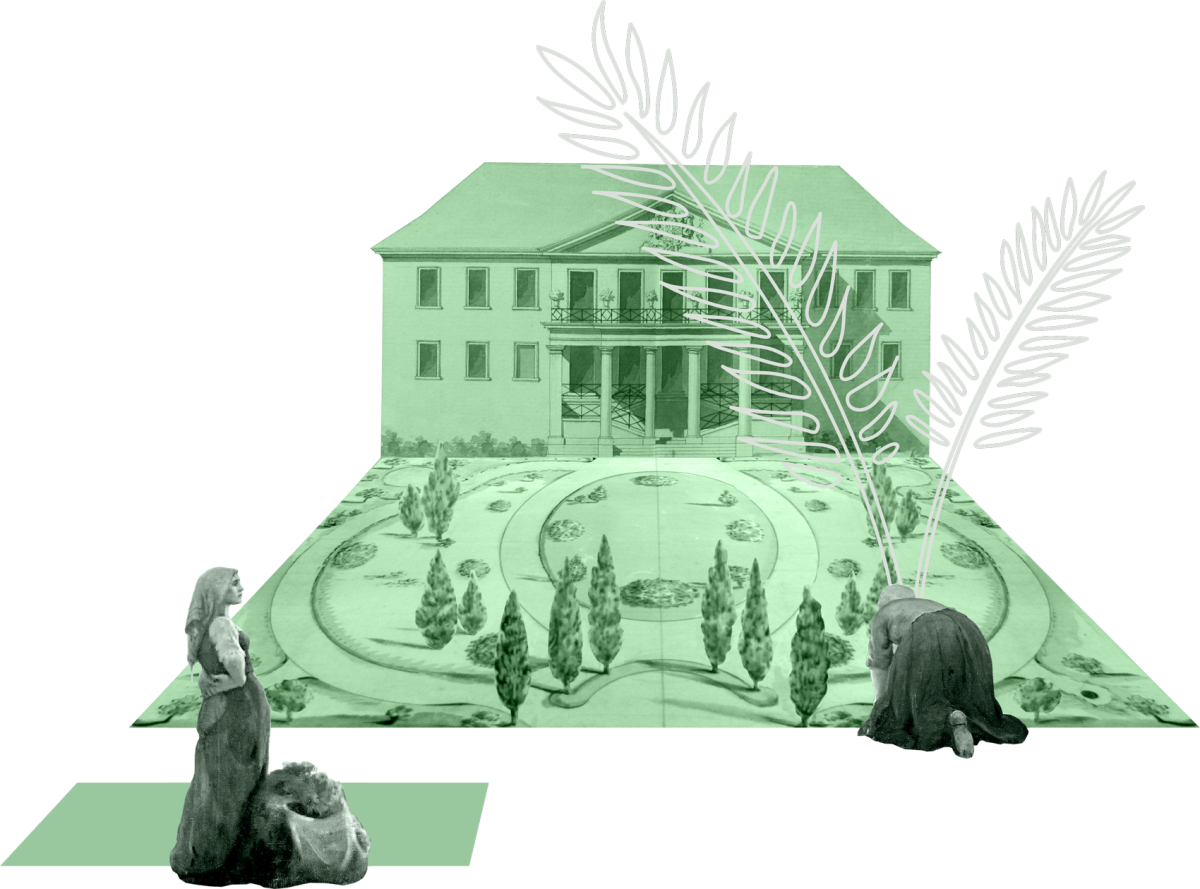A new park and many wheelbarrows of dirt
Johann Störrle, Day laborer
![]()
Christ alive, how my back hurts! By now, I have carted eight wheelbarrows full of dirt from one side of the grounds to the other. This is supposed to become a hill, the gardener said. For his lordship wants a new park – instead of flowers and hedges he now fancies trees and ponds. Well, if that’s what he likes… Our lot is content if we own enough land for corn and vegetables.
The park is no playground!
Chief administrator Joseph Behring
![]()
The people just won’t stop complaining. But the walls surrounding the park were a necessity. In former times, the children from the village were allowed to help harvesting fruit. But since Her Ladyship has bought these expensive plants, the garden is off-limits. And if I catch the rascal who pinched all the cherries from the gardener’s best cherry tree, he’ll get what’s coming to him.
There’s just no money!
Manfred Schulz, Mayor
![]()
This civic association keeps bugging me. Their slogan is “A park for all!”. If only it were this simple: They don’t seem to know the cost of maintaining a stately park? It’s no surprise Count Klagenfeld and his wife could not keep it in shape. Graveling the paths, mowing the lawn, cultivating the exotic plants, and on top of all that the huge ponds. That’s simply too much for our community’s workers. I see the point that the park can attract visitors. But if there is no money to start with …
